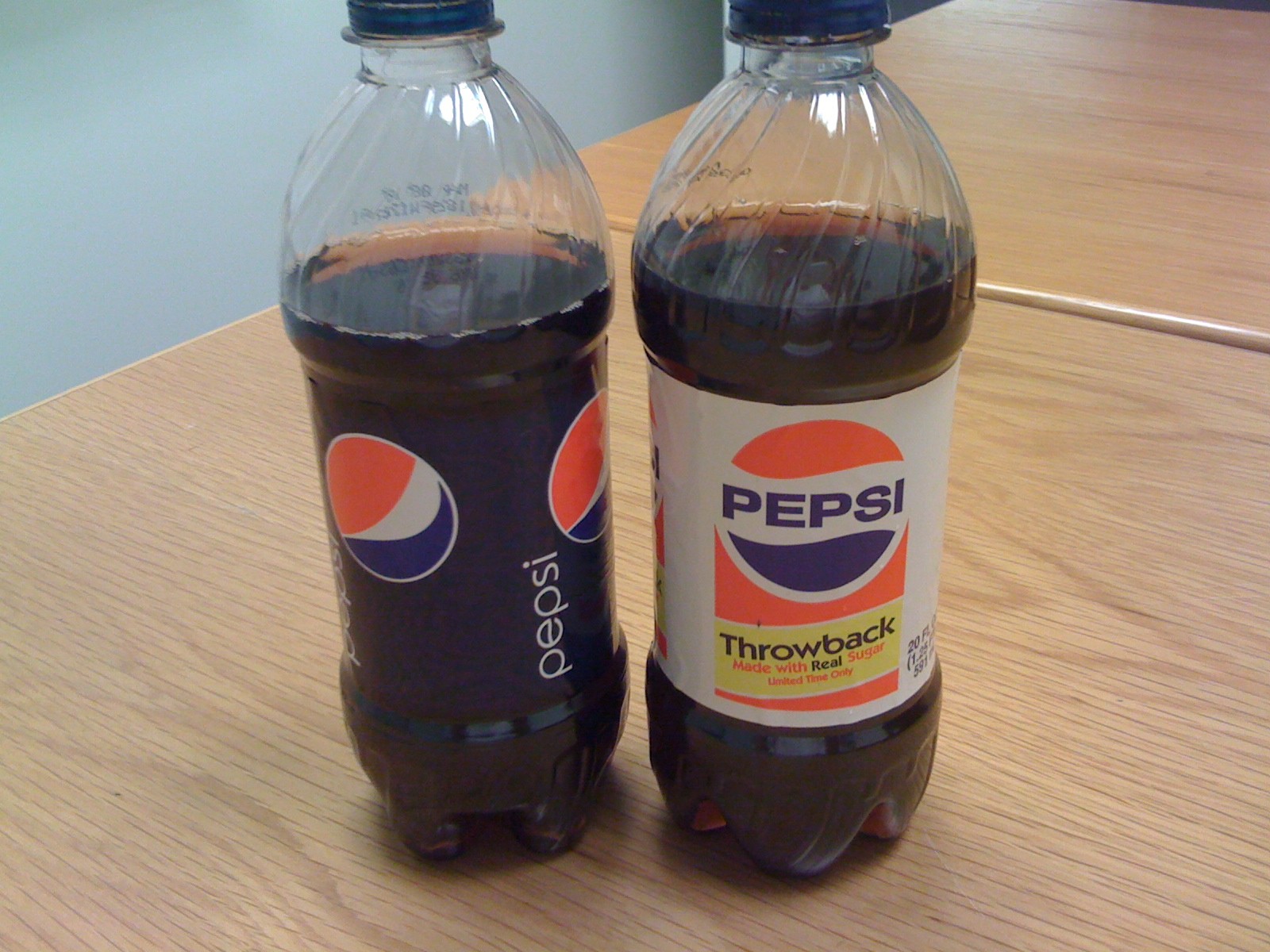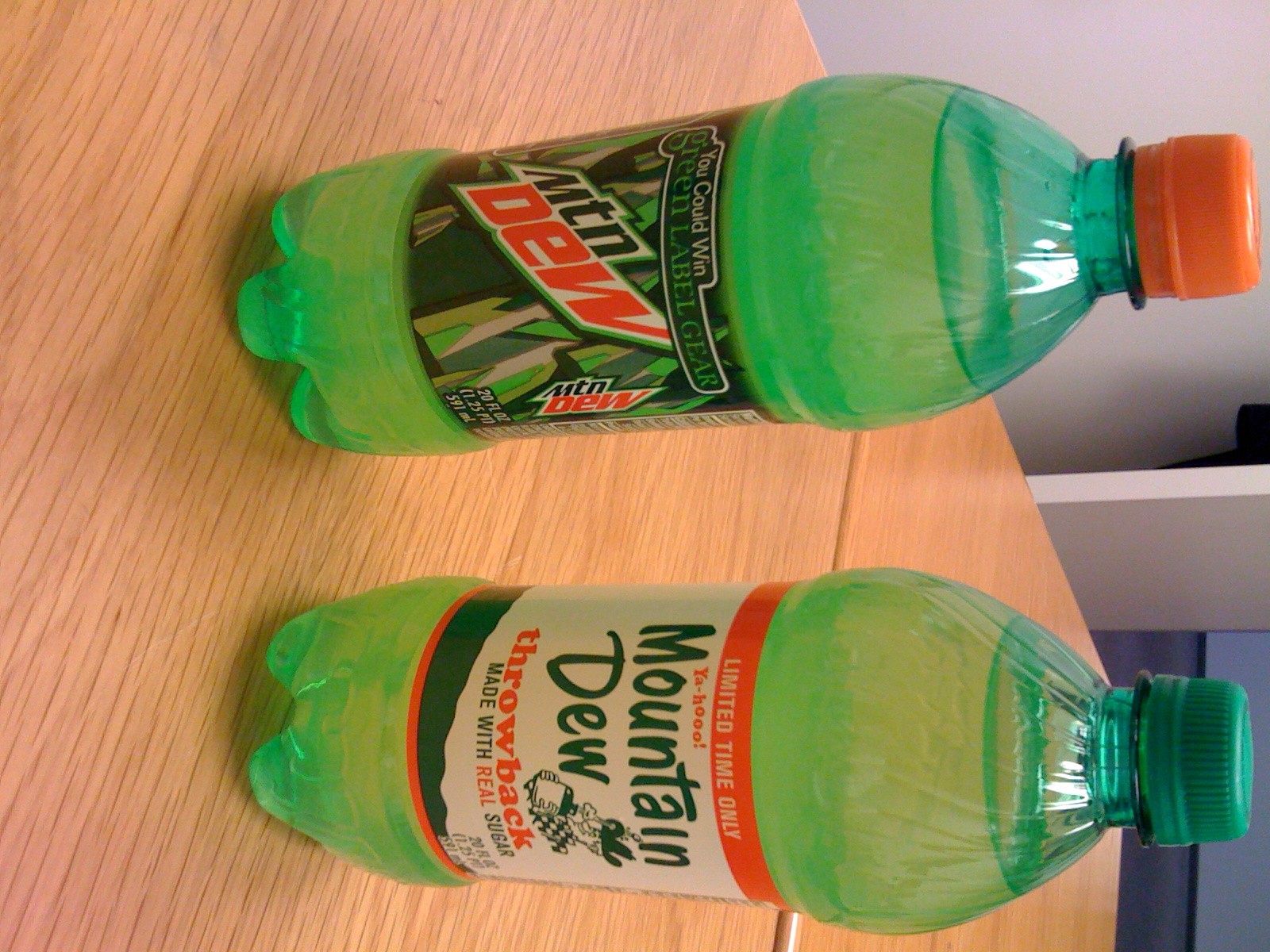
Last week's Dueling Dishes article, about the “Throwback” sodas made with real sugar compared to those made with the now-standard high-fructose corn syrup (HFCS) garnered more comments than normal, including a reply from Audrae Erickson, the president of the Corn Refiners' Association, defending HFCS and pointing readers at their PR website.
While Stick A Fork In It is surprised to have received this sort of attention (news scraper, anyone?) it doesn't alter the fact that the website is just that, a PR tool. HFCS is still a worse choice for a sweetener than sugar, and here's why:
]
They're not identical: Table sugar is equal amounts of glucose and fructose, chemically bonded (a water molecule is lost in the bond, which means that C6H12O6 + C6H12O6 → C12H22O11 + H2O. Two main forms of HFCS are used: HFCS-42, which is used in baked goods, is 42% fructose and 58% glucose. HFCS-55, which is used in sodas, is 55% fructose and 45% glucose. Neither of those is half fructose and half glucose.
The website explains that

The same soda seems to require different amounts of sweetener:
One would think the point of Pepsi Throwback is to replicate the Pepsi
taste that's known all over the world with sugar instead of HFCS. If
the two are nutritionally identical (4 calories per gram, which is
correct), why then does the nutrition facts label on the Pepsi have a
higher count of sugar grams? Why is the Mountain Dew Throwback ten
calories fewer per 20 fl. oz. bottle? This can certainly be chalked up
to differences in the recipe rather than nutritional differences, but
it seems like PepsiCo R&D would have put a huge amount of work into
making sure they tasted the same.
Extended shelf-life is not always a good thing:
The Corn Refiners' Association are absolutely correct in their
statement that foods made with corn syrup have a longer shelf life than
those made with sugar. Corn syrup, whether high-fructose or not, is
much more hygroscopic than sugar; foods made with corn syrup pull more
moisture out of the air than foods made with sugar, which means the
foods taste fresh longer. It might not be a bad thing to eat things
that actually are fresh, rather than things that still taste
preternaturally fresh after a few weeks on the shelf. If extended
shelf-life is desire, more or less any saturated sugar syrup (honey,
for example) will fit the bill without as much of the controversy.[

They taste different:
This was a rare chance to do an actual test; the ingredient lists were
the same, with the exception of the sweetener. Yet everyone who tried
the sodas said the sugar soda tasted sweeter. In the case of Pepsi it
was a good thing; in the case of Mountain Dew, not so much.
HFCS can contain mercury: HFCS is made, in part, by treating cornstarch with caustic soda. Some caustic soda can contain mercury. A study
published in the Environmental Health Journal found measurable amounts
of mercury in 31% of the samples of HFCS they took from three sources
in 2005. The study, after a big sensational paragraph about seven tons
of mercury being missing from the caustic soda plants in the year 2000,
concluded that HFCS may need to be accounted for in the mercury
footprint calculations for children and “sensitive populations”. The
Corn Refiners' Association, of course, insisted that the study was based on outdated material. 2005 was not that long ago, frankly, and the disingenuous nature of the reply is summed up by the claim that, “…[f]or more than 150 years, corn wet millers have been perfecting the
process of refining corn to make safe ingredients for the American food
supply.” HFCS was invented in 1957.
The
short answer to why so many foods contain HFCS (instant ramen, barbecue
sauce, pasta sauce, even bread) is that HFCS is cheap. The price of
sugar in the US is artificially high; imported sugar, which is most of
what Americans consume (there isn't enough sugarcane planted in this
country to satisfy the market), has high tariffs and a quota system
that has been in place since 1982 under President Reagan. (So much for
the Republicans being the conservatives.)
Even if the two were
completely and utterly identical, and the same price, it would still be
preferable to use sugar in place of HFCS, simply because all else being
equal, the better choice is that which is less processed. Using
demerara sugar or piloncillo (the cones of Mexican sugar which contain
the molasses) would be less processed, incidentally, but brown sugar,
which is refined white sugar with molasses added back in, would not.
Ultimately,
it's about what you put in your body; reducing consumption of sugar and
HFCS is probably a good idea for most people. If fructose is the order of the day, eat a piece of fruit.


CBD exceeded my expectations in every way thanks https://www.cornbreadhemp.com/blogs/learn/hemp-vs-marijuana . I’ve struggled with insomnia in the interest years, and after tiring CBD for the first age, I lastly experienced a full eventide of restful sleep. It was like a force had been lifted off the mark my shoulders. The calming effects were calm despite it profound, allowing me to meaning off naturally without sensibility groggy the next morning. I also noticed a reduction in my daytime anxiety, which was an unexpected but allowed bonus. The tactfulness was a flash rough, but nothing intolerable. Comprehensive, CBD has been a game-changer in compensation my slumber and uneasiness issues, and I’m grateful to have discovered its benefits.